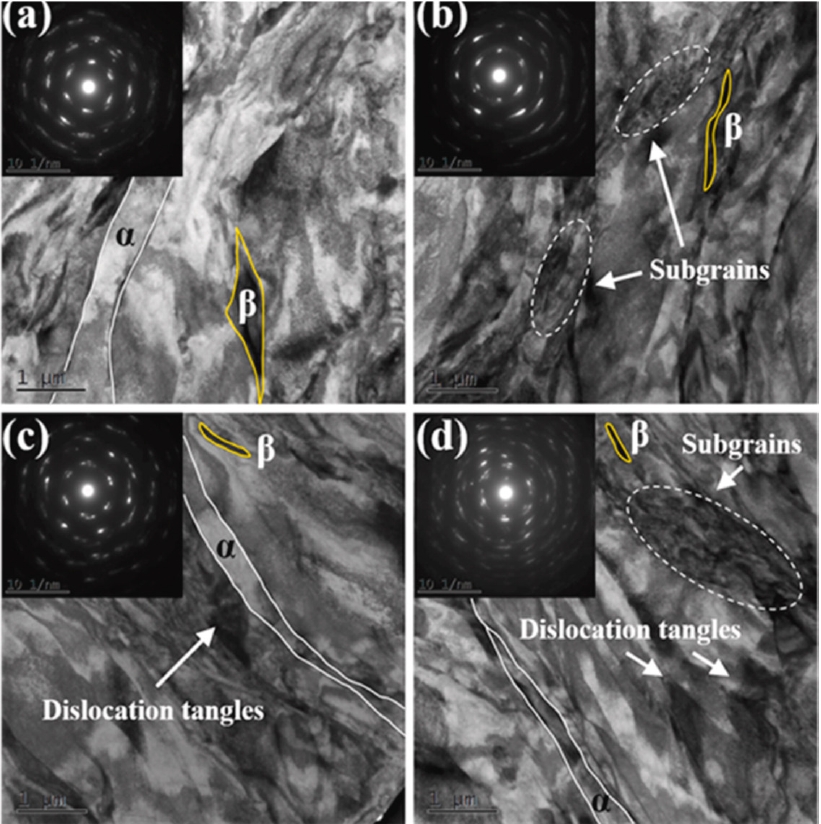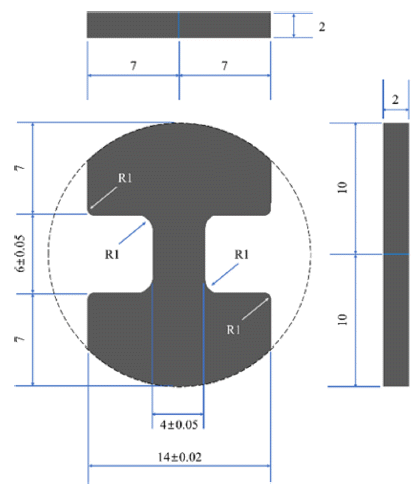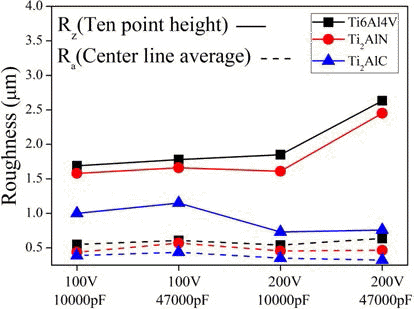Search
- Page Path
- HOME > Search
- [English]
- Comparative Review of the Microstructural and Mechanical Properties of Ti-6Al-4V Fabricated via Wrought and Powder Metallurgy Processes
- Raj Narayan Hajra, Gargi Roy, An Seong Min, Hyunseok Lee, Jeoung Han Kim
- J Powder Mater. 2024;31(5):365-373. Published online October 31, 2024
- DOI: https://doi.org/10.4150/jpm.2024.00213

- 1,037 View
- 42 Download
- 2 Citations
-
 Abstract
Abstract
 PDF
PDF - This review examines the microstructural and mechanical properties of a Ti-6Al-4V alloy produced by wrought processing and powder metallurgy (PM), specifically laser powder bed fusion (LPBF) and hot isostatic pressing. Wrought methods, such as forging and rolling, create equiaxed alpha (α) and beta (β) grain structures with balanced properties, which are ideal for fatigue resistance. In contrast, PM methods, particularly LPBF, often yield a martensitic α′ structure with high microhardness, enabling complex geometries but requiring post-processing to improve its properties and reduce stress. The study evaluated the effects of processing parameters on grain size, phase distribution, and material characteristics, guiding the choice of fabrication techniques for optimizing Ti-6Al-4V performance in aerospace, biomedical, and automotive applications. The analysis emphasizes tailored processing to meet advanced engineering demands.
-
Citations
Citations to this article as recorded by- Removal of Organic and Inorganic Contaminants from Titanium Turning Scrap via Alkali and Acid Two-Step Cleaning
Seong Min An, Raj Narayan Hajra, Chan Hee Park, Jin-Ho Yoon, Jinsung Rho, Chang-Min Yoon, Jeoung Han Kim
MATERIALS TRANSACTIONS.2025; 66(7): 855. CrossRef - Effect of oxygen content in feedstock powders on microstructure and mechanical properties of ELI Ti-6Al-4V fabricated via laser powder bed fusion
Woo Hyeok Kim, Sang Woo Kim, Raj Narayan Hajra, Gargi Roy, Jeoung Han Kim
Powder Metallurgy.2025; 68(4): 307. CrossRef
- Removal of Organic and Inorganic Contaminants from Titanium Turning Scrap via Alkali and Acid Two-Step Cleaning
- [Korean]
- Influence of Milling Conditions on the Microstructural Characteristics and Mechanical Properties of Non-equiatomic High Entropy Alloy
- Namhyuk Seo, Junhyub Jeon, Gwanghoon Kim, Jungbin Park, Seung Bae Son, Seok-Jae Lee
- J Korean Powder Metall Inst. 2021;28(2):103-109. Published online April 1, 2021
- DOI: https://doi.org/10.4150/KPMI.2021.28.2.103

- 530 View
- 3 Download
-
 Abstract
Abstract
 PDF
PDF High-entropy alloys have excellent mechanical properties under extreme environments, rendering them promising candidates for next-generation structural materials. It is desirable to develop non-equiatomic high-entropy alloys that do not require many expensive or heavy elements, contrary to the requirements of typical high-entropy alloys. In this study, a non-equiatomic high-entropy alloy powder Fe49.5Mn30Co10Cr10C0.5 (at.%) is prepared by high energy ball milling and fabricated by spark plasma sintering. By combining different ball milling times and ball-topowder ratios, we attempt to find a proper mechanical alloying condition to achieve improved mechanical properties. The milled powder and sintered specimens are examined using X-ray diffraction to investigate the progress of mechanical alloying and microstructural changes. A miniature tensile specimen after sintering is used to investigate the mechanical properties. Furthermore, quantitative analysis of the microstructure is performed using electron backscatter diffraction.
- [Korean]
- Characteristics of Material Properties and Machining Surface in Electrical Discharge Machining of Ti2AlN and Ti2AlC Materials
- Eui-Song Choi, Chang-Hoon Lee, Gyung-Rae Baek, KwangHo Kim, Myung Chang Kang
- J Korean Powder Metall Inst. 2015;22(3):163-168. Published online June 1, 2015
- DOI: https://doi.org/10.4150/KPMI.2015.22.3.163

- 524 View
- 1 Download
- 1 Citations
-
 Abstract
Abstract
 PDF
PDF Ti alloys are extensively used in high-technology application because of their strength, oxidation resistance at high temperature. However, Ti alloys tend to be classified very difficult to cut material. In this paper, The powder synthesis, spark plasma sintering (SPS), bulk material properties such as electrical conductivity and thermal conductivity are systematically examined on Ti2AlN and Ti2AlC materials having most light-weight and oxidation resistance among the MAX phases. The bulk samples mainly consisted of Ti2AlN and Ti2AlC materials with density close to theoretical value were synthesized by a SPS method. Machining characteristics such as machining time, surface quality are analyzed with measurement of voltage and current waveform according to machining condition of micro-electrical discharge machining with micro-channel shape.
-
Citations
Citations to this article as recorded by- Comparative Study on Ablation Characteristics of Ti-6Al-4V Alloy and Ti2AlN Bulks Irradiated by Femto-second Laser
Ki Ha Hwang, Hua Feng Wu, Won Suk Choi, Sung Hak Cho, Myungchang Kang
Journal of the Korean Society of Manufacturing Process Engineers.2019; 18(7): 90. CrossRef
- Comparative Study on Ablation Characteristics of Ti-6Al-4V Alloy and Ti2AlN Bulks Irradiated by Femto-second Laser
- [English]
- Fabrication and Pore Characteristics of Cu Foam by Slurry Coating Process
- Dahee Park, Eun-Mi Jung, Sangsun Yang, Jung-Yeul Yun
- J Korean Powder Metall Inst. 2015;22(2):87-92. Published online April 1, 2015
- DOI: https://doi.org/10.4150/KPMI.2015.22.2.87

- 492 View
- 3 Download
- 1 Citations
-
 Abstract
Abstract
 PDF
PDF Metallic porous materials have many interesting combinations of physical and geometrical properties with very low specific weight or high gas permeability. In this study, highly porous Cu foam is successfully fabricated by a slurry coating process. The Cu foam is fabricated specifically by changing the coating amount and the type of polyurethane foam used as a template. The processing parameters and pore characteristics are observed to identify the key parameters of the slurry coating process and the optimized morphological properties of the Cu foam. The pore characteristics of Cu foam are investigated by scanning electron micrographs and micro-CT analyzer, and air permeability of the Cu foam is measured by capillary flow porometer. We confirmed that the characteristics of Cu foam can be easily controlled in the slurry coating process by changing the microstructure, porosity, pore size, strut thickness, and the cell size. It can be considered that the fabricated Cu foams show tremendous promise for industrial application.
-
Citations
Citations to this article as recorded by- Preparation and comparative evolution of mechanical behavior of Fe and Fe2O3 foams and their polymer composites
Vemoori Raju, Roy Johnson, Asit Kumar Khanra
Journal of Alloys and Compounds.2018; 750: 71. CrossRef
- Preparation and comparative evolution of mechanical behavior of Fe and Fe2O3 foams and their polymer composites
TOP
 kpmi
kpmi


 First
First Prev
Prev


